Saltwater fishing: A family affair
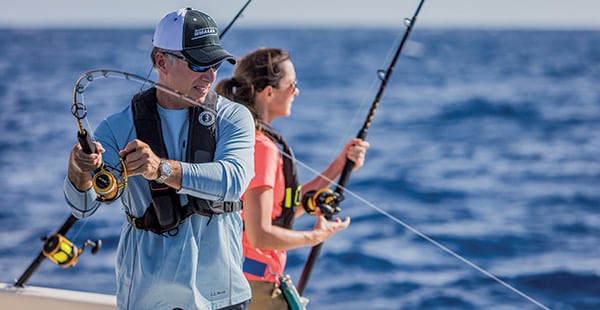
Current trends show bright future for saltwater fishing segment
America’s anglers are estimated to spend $49.8 billion per year in retail sales associated with their sport, according to a recent report released by the American Sportfishing Association (ASA), with the help of Southwick Associates titled “Sportfishing in America: An Economic Force for Conservation.”
According to the recent Special Report on Fishing, produced by the Recreational Boating and Fishing Foundation (RBFF), 49.1 million Americans participated in fishing in 2017, up from 47.2 million in 2016, and approaching the most recent high of 51.8 million in 2007. The same study reported that 4.4 percent of the U.S. population, or 13.1 million people participated in the saltwater fishing segment alone.
With a total annual economic impact of $125 billion, fishing supports more than 800,000 jobs and generates $38 billion in wages and $16 billion in federal, state and local taxes.
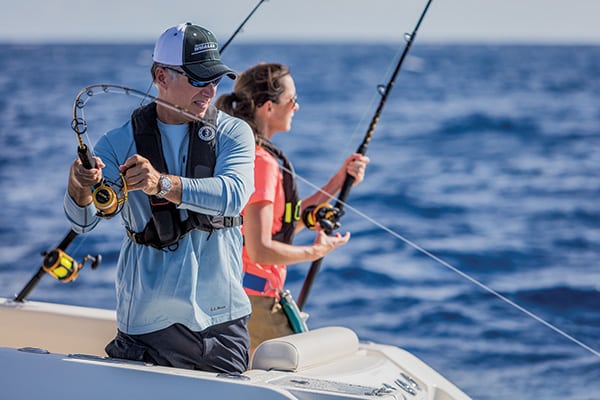
Despite the saltwater fishing segment being the second smallest of the economic contribution of fishing at 24 percent, the segment is a great climbing contributor to the American economy. Retail sales for the segment total over $14 billion, adding over $18 billion in value to GDP. The segment also provides jobs to almost 229,000 workers.
“Sportfishing has a significant impact on this nation’s economy,” said ASA President Glenn Hughes. “Just by enjoying a day on the water, men, women and children across the United States pump billions of dollars into this country’s economy. In many ways, America’s anglers are the nation’s most powerful force for conserving our nation’s fisheries and waters, investing more than $1 billion dollars in fisheries management and conservation through taxes on fishing equipment and state fishing license sales.”
Along with growing numbers of anglers, the RBFF report stated that the age range of anglers is also growing. The study reported that fishing is becoming an entire family activity, rather than just adults going out and fishing today.
“In general, children ages 6 to 12, participated in fishing at a higher rate than teenagers, ages 13 to 17. Both groups fished more than they did the year before,” the report stated.
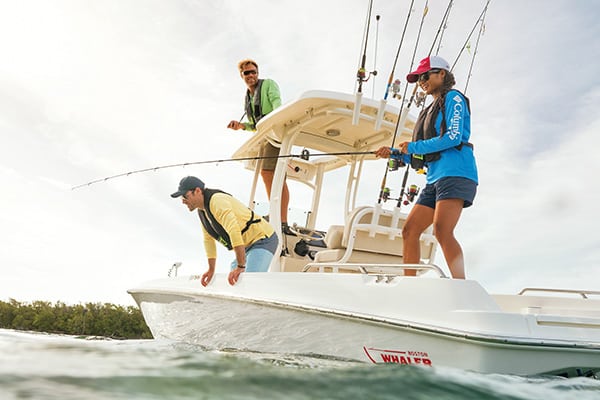
An increase in fishing participation has lead to a push in the boatbuilding world to create better, bigger boats, with more powerful engines, and features to please the whole family. When it comes to saltwater fishing, this is especially true in the center console boat segment.
“You hear it more and more these days, customers want a boat suitable for everyone and everything. Family, fishing, friends, you name it,” said Alan Lang, Scout Boats director of sales and marketing.
In the center console segment, South Carolina’s Scout Boats continues to consistently push the features included on a saltwater fishing boat. From bow cameras molded into the bow for better vision, to digital switching and increased seating, Scout aims to build a boat to keep every single member of a family happy on the water.
“Comfort is one thing that is really trending right now,” Lang said. “More and more features are simply becoming standard rather than options on today’s saltwater boats.”
Lang pointed to Scout’s recent deal with SeaKeeper as an example of what was once an option for Scout center console customers, now becoming a standard on all Scout boats 38 feet and up.
Creating a boat for the whole family and more to enjoy is also at the forefront of the creative minds of the team at Boston Whaler.
“Today the boats are filled with a multitude of comfort features,” said Jeff Vaughn, Boston Whaler’s vice president of sales, marketing and customer service. “People continue to look for versatility in a boat.”
Vaughn said that consumers are no longer using center console boats solely for fishing. “Most people aren’t going offshore fishing every minute of their lives,” he added. “They’re making random day trips with the whole family, they’re taking friends out for an afternoon cruise, you name it, customers want to be able to do it.”
Despite the demand for more and more technology on a saltwater fishing boat, Vaughn said that Boston Whaler is careful not to “over-do” what goes into its boats.
“We’re very focused on making our boats comfortable and fitted with the best technology, but we’re not putting things in a boat simply to put them in,” Vaughn said. “We’re all about meaningful technology. It’s more what’s going to work for new products that make boating more comfortable and versatile.”
Both Lang and Vaughn said that much of the innovations in the center console saltwater fishing segment continue to be driven forward by what’s available to the consumer in the automotive industry.
“With peoples experiences with automobiles and mobile phones today, of course it has to be implemented into a boat, and done so meaningfully and thoughtfully,” Vaughn said.
“People expect to go from their cars to their boats and expect to see the same technology, and experience seamlessness while transitioning between both,” Lang added.
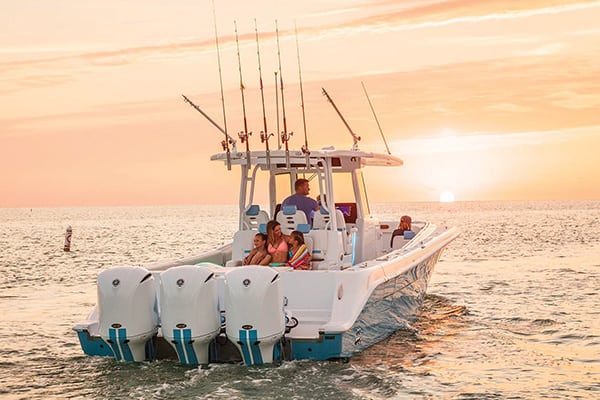
Along with an expectation of increased technology and comfort, consumers are driving center console boat builders to build bigger boats.
“Consumers are now looking to upgrade to bigger boats to keep up with the desire to make fishing and boating a family affair,” Lang said. “And with a demand for bigger boats, we as boat builders need to meet that demand with the same quality and strength as our smaller boats.”
In effort to continue pushing the length of their boats, Scout recently announced the new Scout 530 LXF, a 53-foot center console with luxuries for everyone in the family. “We’re building that thing like a tank,” Lang added. “It’s being built for it all, performance, speed, strength, comfort, you name it.”
Vaughn said that Boston Whaler is also seeing a trend toward larger boats in the center console market, especially in the 22- to 32-foot range, currently at about 8,200 units for 2018.
“The market has grown dramatically over the last few years,” Vaughn said. “Even with a slight growth rate decrease, the explosion is still getting bigger and better.”
Boston Whaler currently offers a wide range of boats from 13-feet up to 42-feet in length. Vaughn said that Boston Whaler is looking into pushing those limits and building larger boats, but not rushing into anything.
With Director of Engineering Kurt Bergstrom, HCB Yachts is at the forefront of pushing the limits on what a saltwater, center console fishing boat can be in terms of features, and especially in length.
Bergstrom led HCB in design to create the 53-foot Suenos, which was initially paired with a quad-set of Seven Marine high horsepower engines. However, Bergstrom and HCB didn’t stop there. Next, the team released the 65-foot Estrella, paired with five Seven Marine 627 outboard engines.
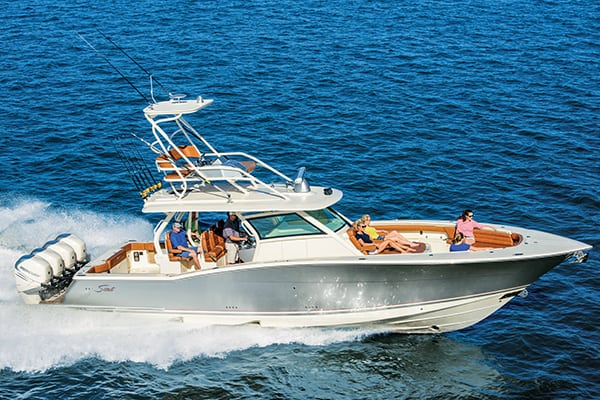
The demand for larger boats requires refined engine design and bigger, stronger engines to match and power the new lengths on the market.
“Because we are pushing the boundaries on size, we are making engine builders push their boundaries on size, power, and more,” Bergstrom said.
Engine builders are doing just that. Yamaha recently released its new V8 425 XTO Offshore and Mercury Marine recently debuted its new V8 line featuring a 250 and 300hp Verado, 250 and 300hp FourStroke, and 200, 225, 250 and 300hp Pro XS.
“This engine is designed to take us to the next level of what we can possibly do with outboard motors within the industry,” said Ben Speciale, president of Yamaha Marine Group. “We are answering the call for bigger boats with a different platform, a new, big-block 5.6L V8. It’s all about integrating power systems into much larger boats.”
New engines are durable, powerful and provide options for consumers that they’ve never had before, Mercury Marine President John Pfeifer said in a press release. “Our new lineup aligns with what consumers are asking for and we are delighted to deliver it to them.”
Keeping up with an industry-wide trend, the saltwater segment is seeing a continued push away from sterndrive options and putting more and more outboard engines on the backs of larger center console boats.
“We’re seeing more people with diesel inboards scaling down to outboards,” Vaughn said. “People are buying them [outboards] because they’re simpler. Simpler for maintenance, simpler for repowering, simpler for everything.”
With a trend in making fishing a family activity, and growing numbers of youth anglers, boat builders and engine builders alike remain optimistic for the saltwater and center console segments. The RBFF said that more than 82 percent of current adult participants were introduced to fishing during the childhood, showing positive signs for the future of the segment.
“Boaters and anglers will be excited to continue to see the evolution of the saltwater segment,” Vaughn said. “Not just Boston Whaler, but the category as a whole. Exciting things are happening and will continue to happen around the industry.”




